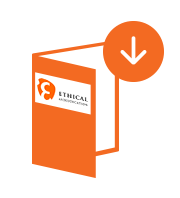Clinical trial endpoint adjudication (EA) by an independent expert committee is gaining momentum as a way to strengthen and harmonize key efficacy and safety data. But is there real return-on-investment of this procedure when added to the already high cost of drug development? By building on modern technologies, EA can actually become a cost-cutter and a quality enhancer.
By D. Stamatiadis, PhD, MBA, author of “21st Century Technologies, a possible solution for 21st century challenges in healthcare”, conference at the Pasteur Institute, February 20th, 2014.
Clinical development is complex and costly by nature. As humanity advances along the path of discovering and using new diagnostic methods, new medicines, new devices and new therapeutic approaches while protecting the safety and well-being of those, healthy volunteers or patients, participating in clinical trials, more regulations, more safeguards and more cost have been constantly added to the equation(1).
New drugs, new regulations, (good) old concepts
One of the main challenges during a trial is to accurately assess the effects of the new drug avoiding bias and reducing the effect of external factors. Masking the nature of the treatment, (called “blinding”) is a logical precaution in order to account for the placebo effect, the tendency to feel better just by knowing that you are given a medicine. “Double blinding” means that neither the patient nor the physician is aware of the treatment. This eliminates also the doctor’s tendency to find that the patient is doing better if he knows an active drug is given. Finally, there is a third level of blinding, that of the trial team. In practice, only one person knows who received what: the study statistician and this person is not allowed to be involved in any of the trial operations.
Double-blind against placebo is the gold standard in clinical development, especially for the large “pivotal” trials that support the therapeutic claims, but it is not always easy to implement. Life threatening diseases make it unethical to use placebo so comparison is made to available treatments (if they exist). Devices can hardly be blinded as they usually look very different. “Open-label” trials (where the nature of the treatment is known) are the next best model but these are rarely accepted as proof of efficacy and are used mostly for assessment of safety, collecting adverse reactions during the use of the new drug. They generally require large numbers of patients to detect all the possible risks. Finally, “Post-marketing surveillance” studies are often requested by regulatory authorities in order to strengthen the safety knowledge by monitoring large cohorts of patients (thousands or more) after marketing authorization has been granted to detect further safety signals.
More expensive, still far from perfect
Still, we are far from perfect in our way of conducting drug development. Drugs that have been granted marketing authorization and have been used by millions of patients had to be retrieved from the market after the discovery that they were not sufficiently safe (the case of Vioxx is notorious). Others have been refused reimbursement because they could not show a benefit-risk profile superior to existing medications. Can we improve the efficiency of our development model and reduce the cost at the same time? Yes, we can and here is how:
Each patient enrolled in a clinical trial adds to the cost that can sum up to tens of millions. Companies need to collect and process large amount of data in order to calculate the predefined endpoints and prove the efficacy and safety of their product. Visiting each participating doctor’s office on a regular basis to verify potential errors in data transcription (or worse, potential fraud) is time-consuming and costly. It involves traveling fees and salaries for specialized monitors (CRAs). Because of these and other high costs, the number of patients required to demonstrate efficacy are planned at a minimum in clinical trials and even small variations of the quality of data can have an influence on the final result.
Even when “blinded” to the treatment, clinicians Investigators can be biased in their endpoint evaluation due to individual conditions (e.g. local medical practices) or by their complete knowledge of the trial goals. In order to counter the effects of bias and account for the natural variability in patient response to treatment, in most cases, regulatory authorities request two pivotal trials with positive outcome in order to deliver a marketing authorization.
Endpoint Adjudication, more complexity...
Clinical endpoint adjudication (EA) helps improve the accuracy and quality of clinical results. It is the process by which clinical trial endpoints are not assessed only by the investigator physicians but in an entirely blinded way by an independent adjudication committee (AC) of experts. In case of disagreement, either between the investigator and the committee or among assessors, consensus is obtained through ad hoc meetings. Endpoint adjudication is required by regulators for certain types of clinical outcomes but can apply to many more and is always welcomed by MAA dossier reviewers as an additional guarantee of quality and accuracy of the study results.
Of course, endpoint adjudication adds cost to a trial so is it worth performing this additional step or are we pushing the complexity and cost beyond what is really needed? Is EA a quality enhancer or an unnecessary complication? A recent publication by Hata et al.(2) investigated the effect of EA on the results of a large cardiology trial in 11140 patients and showed that the impact was negligible, casting doubt on the usefulness of the process. However, this trial being very large, it was expected that the results would be robust with or without independent adjudication.
…or Quality Enhancer?
EA has been shown to reduce bias and variability(3), thus increasing the power of detection of a difference between two treatments or between active and placebo. It can therefore justify its additional cost by helping keep the number of patients enrolled in clinical trials at the statistical minimum and potentially in obtaining marketing authorization by showing positive results in a single pivotal trial instead of two. Furthermore, the cost of EA can be greatly reduced and controlled by using a well-designed software platform for exchanging the necessary information and obtaining the opinion of adjudicators.
Cloud computing has revolutionized many professional areas in the recent years and clinical research is no exception. A cloud-based EA platform can allow all stakeholders to manage the full process efficiently and with high quality at a limited cost. Such solutions can provide the AC Members with accurate, clean and complete data as soon as these become available, regardless of their location. It can directly integrate different data sources into “event packages”, assign different roles to individuals, handle disagreements and support a fully transparent and documented operating procedure. In addition, they offer robust data protection and control as well as easy and accurate archiving of the produced material and GCP compliance.
Endpoint adjudication may not replace traditional blinding methods in clinical trials but it may very well be the next step to containing cost while increasing quality, and that would be a true improvement.
------------------
1) DiMasi JA, Grabowski HG, Hansen RW. Innovation in the pharmaceutical industry: New estimates of R&D costs. Journal of Health Economics. 2016 May 1;47:20–33.
2) Hata et al. PLOS ONE, February 2013 | Volume 8 | Issue 2 | e55807
3) Effects of Central Adjudication in Bias, Variability, Sample Size and Study Power. Juan Torres and Mimmo Garibbo, CBI Endpoint Adjudication 2016 Event. May 4-5, 2016 | Philadelphia, PA (LINK)
DOWNLOAD NOW THE ENDPOINT ADJUDICATION HANDBOOK
The Complete Manual / Reference Book with all the topics related to the Independent Endpoint Adjudication Committees Management




